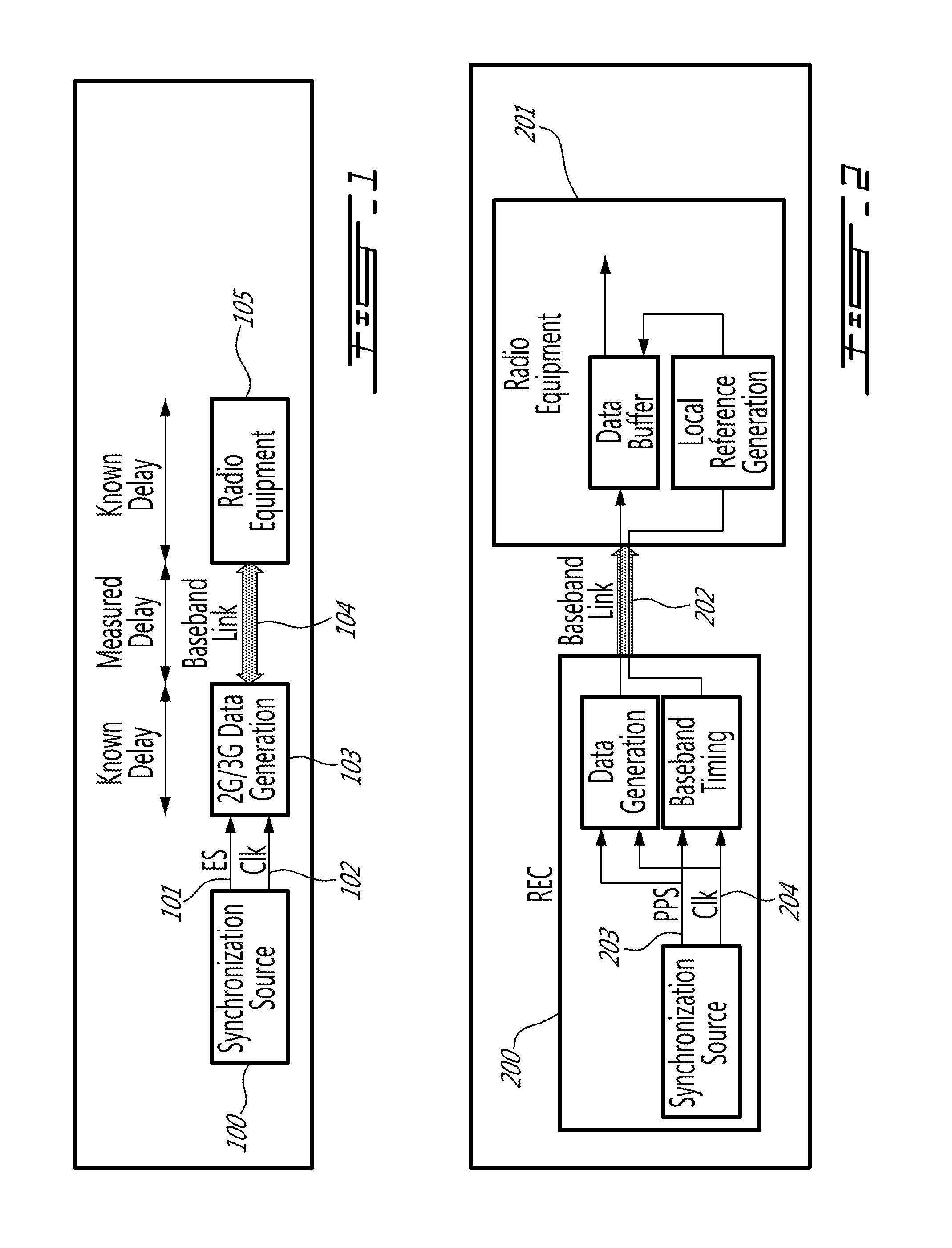Clock switching algorithm based on preferred clock source
a clock switching and clock source technology, applied in the direction of synchronisation signal speed/phase control, synchronization arrangement, transmission monitoring, etc., can solve the problems of outputs becoming unsynchronized with each other, high drop-call rate and data services impaired, and traditional synchronization and clock switching techniques have limited capabilities in situations
- Summary
- Abstract
- Description
- Claims
- Application Information
AI Technical Summary
Benefits of technology
Problems solved by technology
Method used
Image
Examples
Embodiment Construction
[0018]In order to lighten the following description, the following acronyms will be used:
BTS Base Station
CBTS CDMA Base Station
CDMA Code Division Multiple Access
CPRI Common Public Radio Interface
GNSS Global Navigation Satellite System
LTE REC LTE Digital Radio Equipment Controller
MU Multiplexer Unit
NMEA National Marine Electronics Association
REC Radio Equipment Controller
[0019]As will be described below, the primary or preferred clock source can be that of any of the network operator's primary deployed systems. For example, if a network operator is to expand a CDMA network with a new 4G network, the operator is likely to select the clock of the CDMA system as it's primary or preferred clock to which the 4G network will be synchronized. In some circumstances, a secondary clock will become preferred if the primary clock fails. In either case, the operator requires that a suitable clock be us...
PUM
 Login to View More
Login to View More Abstract
Description
Claims
Application Information
 Login to View More
Login to View More - R&D
- Intellectual Property
- Life Sciences
- Materials
- Tech Scout
- Unparalleled Data Quality
- Higher Quality Content
- 60% Fewer Hallucinations
Browse by: Latest US Patents, China's latest patents, Technical Efficacy Thesaurus, Application Domain, Technology Topic, Popular Technical Reports.
© 2025 PatSnap. All rights reserved.Legal|Privacy policy|Modern Slavery Act Transparency Statement|Sitemap|About US| Contact US: help@patsnap.com



